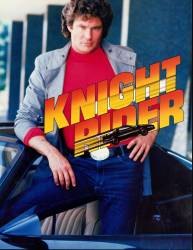Good Day at White Rock - S1-E4
Revealing mistake: After we first see the pack of bikers riding, it cuts to two guys on bikes. They're being towed on a platform of some sort because the never turn their handlebars or front wheel but still turn with the curves in the road.






Answer: I would say that unless there's visual evidence it was another K.I.T.T. car, as in you could see the bar scanner or cut steering wheel, people on here would correct the mistake by saying more than one 1982 Pontiac Firebird Trans-Am was sold and there's no reason it's meant to be a random car.
Bishop73